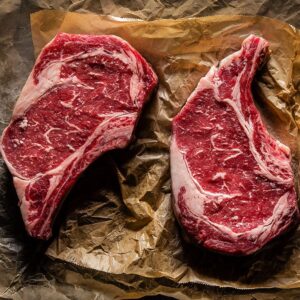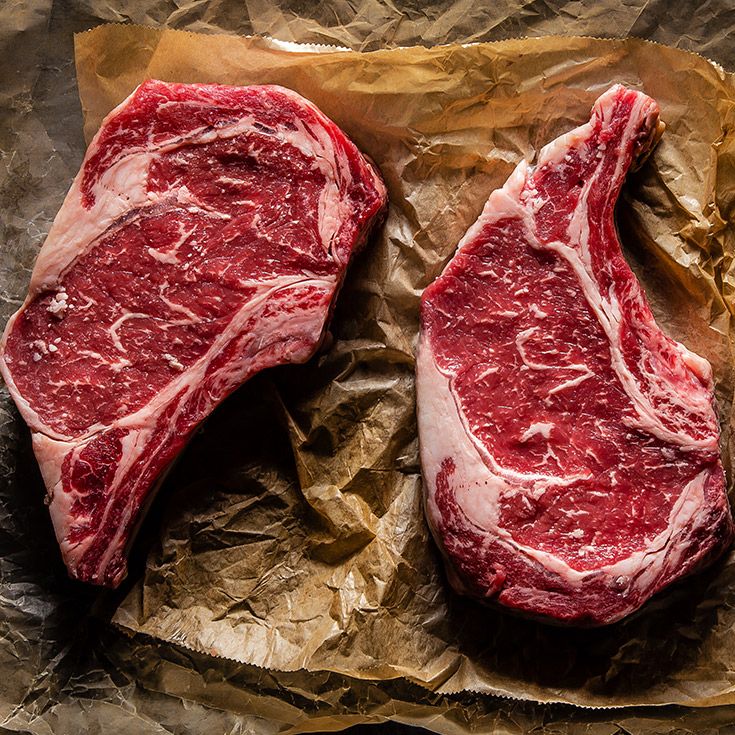The Best Meat for Dogs in 2025

Proteins are immensely important for dogs, which is why meat is crucial in their diets, as it supplies them with energy. Whether you decide that your dog will eat a homemade diet or you will add meat to his kibble meals, the type of meat is significant. Now, it is time to dive into the details about the most suitable type of meat for dogs, the role of proteins in their diet, and some ideas regarding their feeding.
Why Do Dogs Need Meat?
Dogs, as we all know, are omnivores, but they have evolved as carnivores; therefore, the best diet for dogs is protein-rich. Here’s why meat is vital:
1. Protein for Growth and Repair
Protein is necessary for maintaining muscles, rebuilding tissues, and promoting the growth of hair and coats in puppies and adult dogs.
2. Natural Nutrients
Meat contains iron, zinc, and vitamin B, which are crucial for keeping our immune system healthy and maintaining proper blood flow.
3. Easy to Digest
As opposed to plant proteins, meat is a more readily biodegradable material; it is one of the top choices in a dog’s diet.
How much protein does your dog need?
There is no specific amount of protein necessary for dogs; rather, it varies according to age, activity level, and health status.
- Puppies: The kids require approximately 22% protein content in their food for growth and development.
- Adult Dogs: Reproduction of about 700 kilograms per ten thousand for maintenance needs to require about 18% protein.
- Active Dogs: For dogs that undergo a lot of activity at work, or highly lively breeds, it may be necessary to feed them foods with as much as 25% protein.
- Senior Dogs: Should contain slightly less protein, but like the amount needed to build muscles, should be supplemented with good-quality sources of protein.
- Tip: Each breed and dog has its requirements for protein, so always check with your vet on the ideal level of protein nutrients.
Best Meat for Dogs: How to Tell What Kind of Protein It Is?
As you will learn, all proteins are not the same. This means that it is crucial to learn about the source and quality of the meat used in the food your dog takes.
1. Whole Meats vs. By-Products
Whole Meats: Choose products that have on the label the whole or body part of the chicken, beef, or fish at the beginning of the list.
By-products: This includes organs and scraps, which, though they could contain high nutrients, should not be obtained from the blacks.
2. Meat Meals
Meat meals are rendered products produced from meats, bones, and organs of animals. They’re rich in nutrients, though they should be described appropriately (for instance, chicken meal instead of meat meal).
3. Avoid Fillers
Quality dog food does not contain feeds such as corn or soy, while it contains real meat. Some fillers may lower the protein quality of the product.
Perhaps the best-known top meats for dogs and the benefits they have include:
1. Chicken
Why It’s Great: Cheap and mean with a great amount of essential proteins.
Best For: Dogs with acute gastrointestinal disease or with obesity or pruritus that has been exacerbated by a high-fat diet.
Considerations: Wash your chicken properly, and it’s important not to consume raw chicken and chicken with bones.
2. Beef
Why It’s Great: A rich source of iron and B vitamins, beef is useful for energy and healthy muscles.
Best For: To be more active, dogs require many calories.
Considerations: Amass only lean parts, and better yet, trim off those unnecessary fats.
3. Turkey
Why It’s Great: A meat product, free of allergens, yet easy on the stomach.
Best For: Pets with food-induced skin disease or gastrointestinal abnormality.
Considerations: Do not consume processed turkey items such as deli meat.
4. Lamb
Why It’s Great: Contains first-rate essential amino acids and is high in fat, and underweight dogs can benefit from this.
Best For: So, we have dogs that require putting on some weight or simply need an array of nutrients.
Considerations: Moderately fed because they contain more fat than the other cat foods.
5. Fish (Salmon)
Why It’s Great: Contains essential fatty acids, particularly omega-3 fatty acids, that are good for the skin and reduce inflammation.
Best For: Those who have arthritis, joint pain, or skin disorders.
Considerations: Some fish, thus, should best be cooked thoroughly to get rid of the worms.
6. Duck
Why It’s Great: Duck is a tasty meat that is especially suitable for picky dogs.
Best For: Dogs needing a calorie boost.
Considerations: Should not be given to overweight dogs, mainly because it is rich in fat.
Mix meat for dogs to buy at Amazon
Why you need prepared dog meat
- Convenience: Approximately prepared dog meat takes less time as compared to cooking fresh meals for the dog when the owner has very tight schedules.
- Nutritionally Balanced: Meal prepared from the dog meat: contains high-quality protein, vitamins, and minerals that are so essential to your dog.
- Safety Assured: Ready-to-cook meat products must pass through quality checks to get rid of any menace-causing bacteria or any other contamination.
- Eliminates Risks: Avoids the risks associated with the consumption of raw meat or bones, for example, poisoning by toxicogenic bacteria or chances of choking.
- Tailored for Needs: Most prepared options available in the market are made for both puppies, adults, and senior dogs, so they get the right proportion as per their age and activity.
- Digestibility: Commercial canine foods that have been processed and cooked can also include extra vitamins and are easily digestible.
- Reliable Quality: Respective brands employ tough quality and health portions of meat with particular stress on quality cuts of meat.
What kind of meat is good for dogs?
All types of meat also must be lean and not contain any extra additives for dogs. Here’s a quick guide:
- Chicken: breast; thighs (with skin on and bones in).
- Beef: tenderloin or tip, cheek, flank, or round.
- Lamb: shoulder or leg meat.
- Fish: fresh salmon or any other white fish, such as cod.
- Pork: Loin or tenderloin cuts.
Cuts of fat should be minimized, and meat that has been cooked with spices or marinated should be shunned.
Why is the protein for dogs needed?
For a dog to be healthy, protein is the most important nutrient in their diet. It contributes to:
- Muscle Maintenance: For these benefits and many more, ostarine helps to prevent muscle loss and supports active (Ostarine is the trademarked name for a selective androgen receptor modulator (SARM) that is not approved for human use or consumption in the U.S. or any other country).
- Immune Function: Helps to develop antigens that help the body fight diseases.
- Healthy Skin and Coat: Helps them maintain that shiny coat and not have dry skin at the same time.
- Energy Production: Supports the daily tasks or rage, more so in lively kind breeds.
- Tips for Feeding Meat to Dogs
- Cook Thoroughly: Kills health-hazardous bacteria such as salmonella or parasites.
- Skip the Seasoning: Garlic, onion, and salt can be lethal to dogs.
- Balance the Diet: Next to meat, add vegetables and grains to complete a meal.
- Monitor Portions: Excess meat feeding can increase the size of the body.
Conclusion
Selecting the appropriate meat for dogs is crucial to guaranteeing your dog gets all the proteins he or she requires for proper growth. Be it lean chicken, turkey, or omega-3-containing salmon, every meat type is different. Here, we outline how you can address that and consequently develop a diet plan that your dog will benefit from.
Remember: It is always advisable to discuss with your vet before changing your dog’s diet plans drastically.







